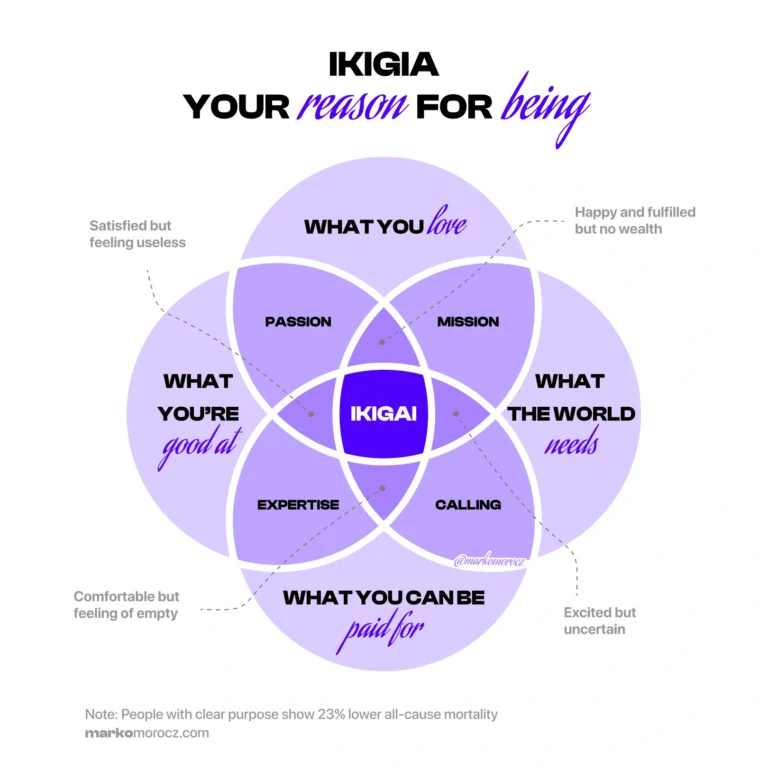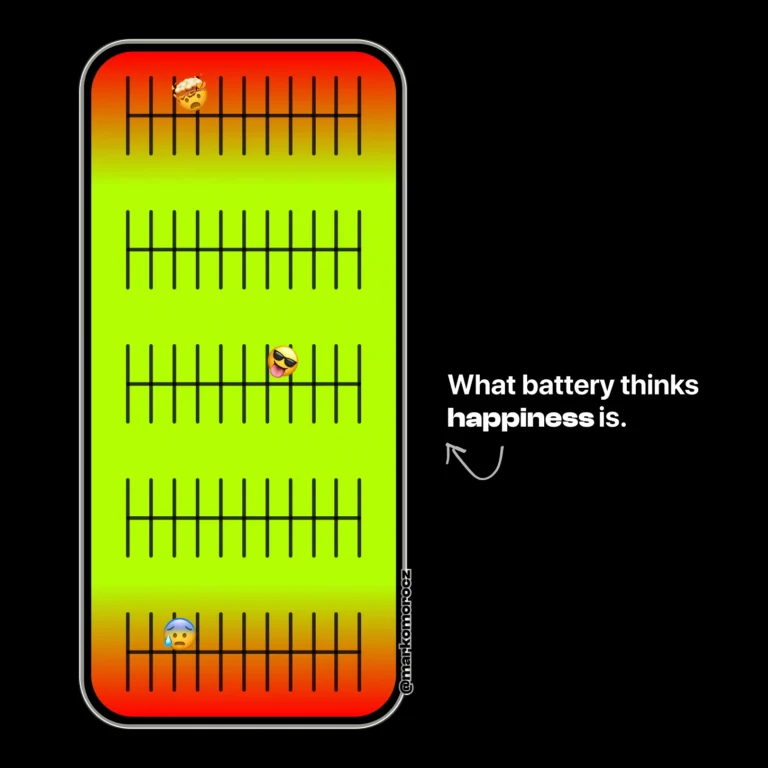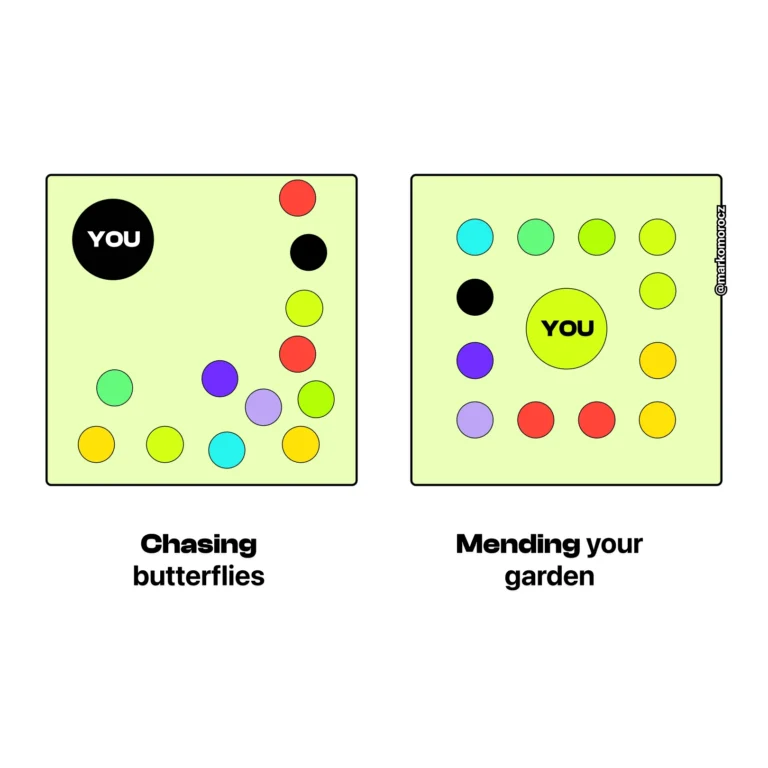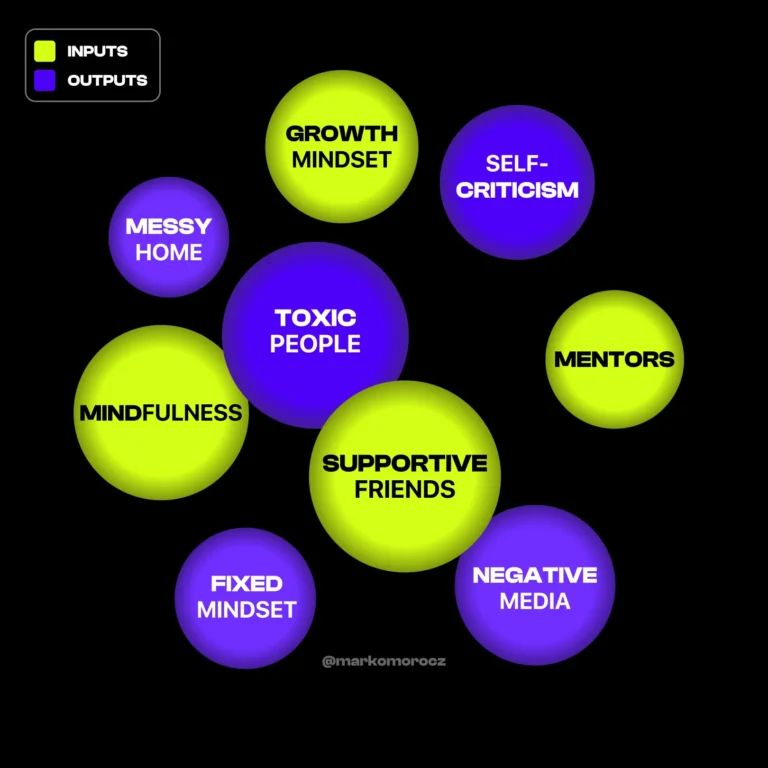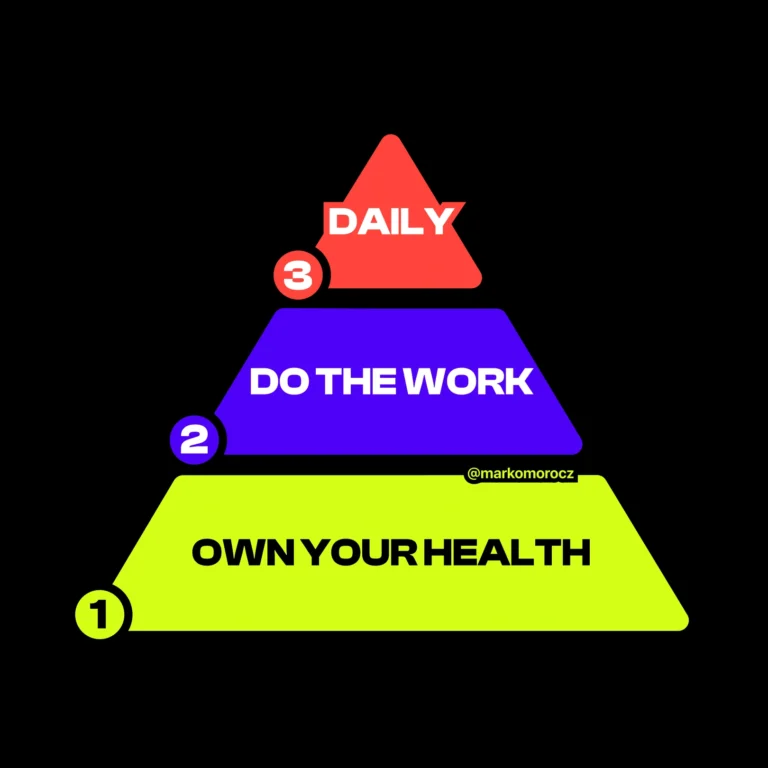The 7 Factors Of Resilience: Building Your Mental Fortress
Resilience isn’t born. It’s built.
Some look unbreakable in life’s arena while others shatter at the first blow. The difference? Not genetics. Not luck.
Mental architecture.
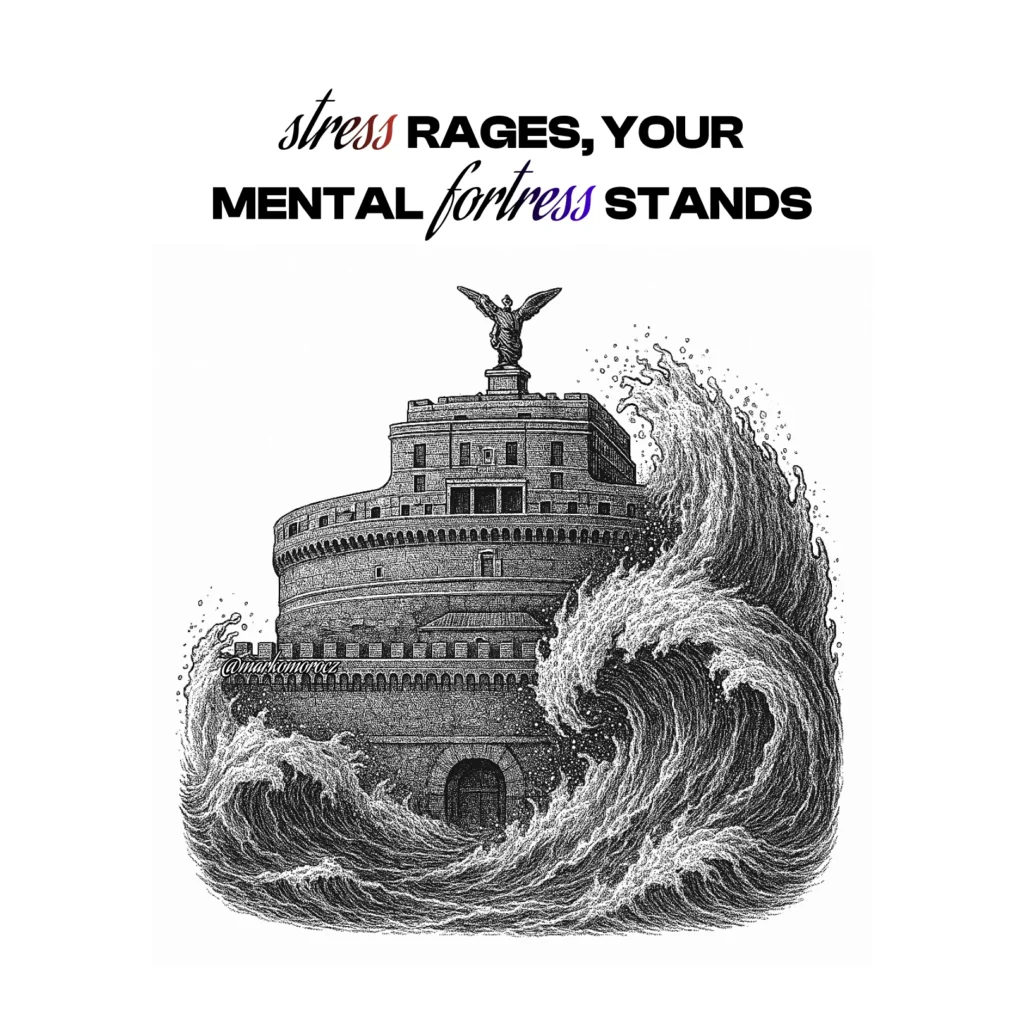
The Resilience Blueprint: Your Mental Fortress
Resilience isn’t mystical. It’s methodical.
Research has identified 7 protective factors that form the foundation of an unbreakable mind:
- Self-belief
- Acceptance
- Solution-seeking
- Self-regulation
- Responsibility
- Relationship-building
- Goals & planning
These aren’t personality traits. They’re skills.
Learnable. Practicable. Masterful.
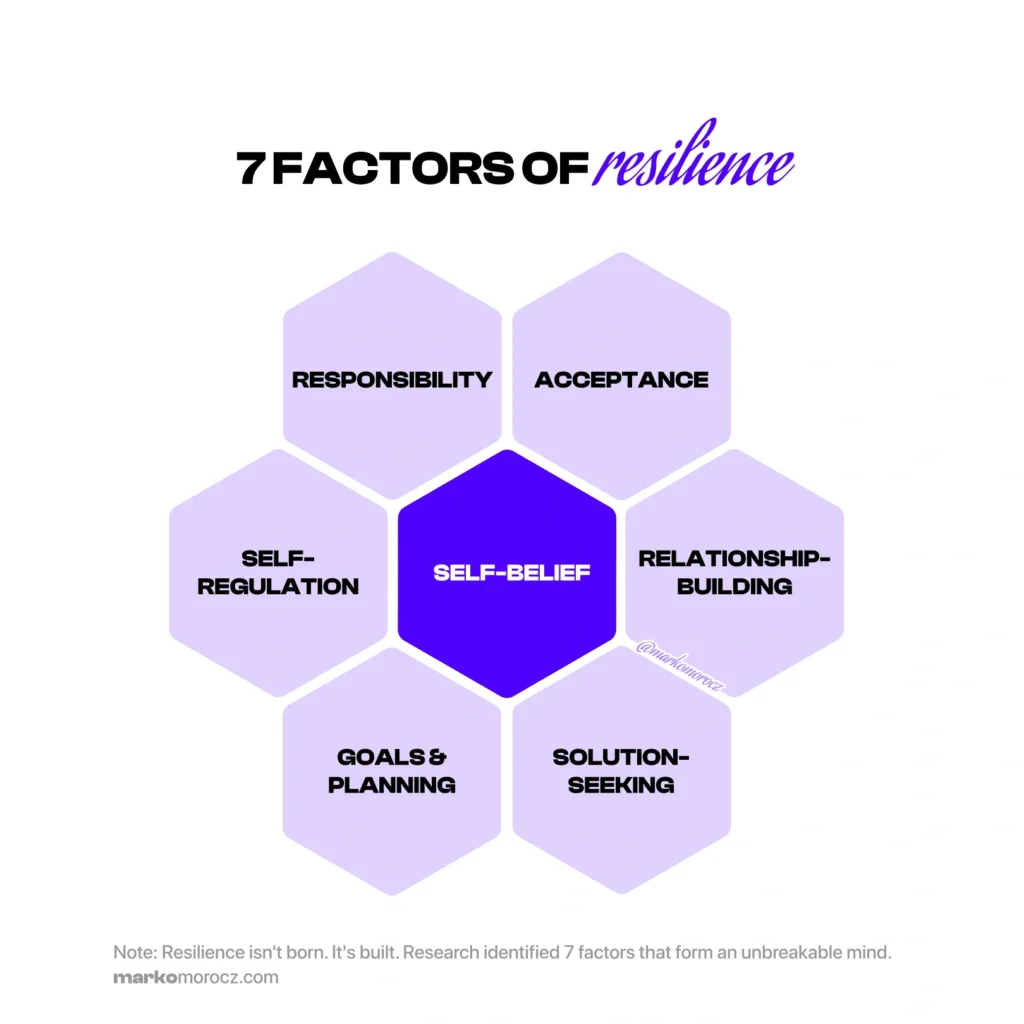
Factor 1: Self-Belief — Faith in Your Capabilities
“Whether you think you can or you think you can’t, you’re right.” — Henry Ford
Self-belief isn’t arrogance. It’s knowing your capabilities and trusting them under pressure.
The Science: Studies show those with high self-efficacy (belief in ability to achieve goals) experience 37% less stress when facing identical challenges compared to those with low self-efficacy.1
Why It Matters: Without self-belief, you enter battles already defeated. With it, obstacles become challenges rather than threats.
How To Build It:
- Track small wins: Document daily victories, no matter how minor
- Recall past successes: Create a “victory log” of previous challenges overcome
- Use success scaffolding: Break daunting tasks into smaller, achievable steps
- Practice self-validation: Acknowledge your efforts, not just outcomes
Red Flag Phrases:
- “This is too much for me.”
- “I’m not cut out for this.”
- “I can’t handle this.”
Replace with:
- “I’ve handled difficult situations before.”
- “I’m built to adapt to challenges.”
- “I can learn what I need.”
Factor 2: Acceptance — Strategic Resource Allocation
“Grant me the serenity to accept the things I cannot change…” — The Serenity Prayer
Acceptance isn’t surrender. It’s strategic resource allocation.
The Science: Acceptance-based coping strategies reduce physiological stress markers by up to 43% compared to avoidance strategies.2
Why It Matters: Fighting reality drains energy you need for solutions. Acceptance conserves that energy.
How To Build It:
- The Controllability Filter: For any stressor, ask “Can I directly control this?”
- Reality-Check Practice: Face uncomfortable truths without sugar-coating
- Paradoxical Interventions: Lean into discomfort rather than avoiding it
- Mindfulness Practice: Observe thoughts without judgment
Red Flag Phrases:
- “I can’t believe this is happening to me.”
- “This shouldn’t be happening.”
- “If only things were different…”
Replace with:
- “I acknowledge this reality and will work within it.”
- “This is happening. Now what’s my next move?”
- “What can I control in this situation?”
Factor 3: Solution-Seeking — Tactical Creativity
“We cannot solve our problems with the same thinking we used when we created them.” — Albert Einstein
Solution-seeking isn’t blind optimism. It’s tactical creativity.
The Science: Problem-focused coping strategies correlate with 51% lower perceived stress levels and improve cognitive performance under pressure.3
Why It Matters: Problems feel overwhelming when viewed as permanent. Solution-seeking creates movement and possibility.
How To Build It:
- Question Storming: Generate 20 questions about the problem instead of immediate solutions
- Perspective Rotation: View the problem from three different viewpoints
- Resource Inventory: List all assets, skills, and allies available
- Constraint Optimization: Use limitations as creative catalysts
Red Flag Phrases:
- “There’s nothing I can do.”
- “This is just how it is.”
- “I’m stuck.”
Replace with:
- “What’s one small action I could take?”
- “What would [your admired person] do in this situation?”
- “How would this look if it were easy?”—I got this from Tim Ferriss, it’s a gem.
Factor 4: Self-Regulation — Emotional Management
“Between stimulus and response, there is a space. In that space is our power to choose our response.” — Viktor Frankl
Self-regulation isn’t suppression. It’s strategic emotional management.
The Science: High emotional regulation ability correlates with 47% lower cortisol reactivity during stress and faster recovery afterward.4
Why It Matters: Unmanaged emotions hijack rational thinking and drain energy. Regulated emotions become fuel for effective action.
How To Build It:
- Emotion Labeling: Name feelings precisely (using expanded emotional vocabulary)
- Physiological Intervention: Use breathing techniques to interrupt stress cascade
- Cognitive Reframing: Change the meaning of triggering events
- State Shifting: Physically change position or environment to break emotional patterns
Red Flag Phrases:
- “You’re making me angry.”
- “I can’t help how I feel.”
- “This is overwhelming.”
Replace with:
- “I’m choosing how to respond to this trigger.”
- “I notice I’m feeling frustrated right now.”
- “I can regulate my emotional state.”
Factor 5: Responsibility — Owning Your Response
“The moment you take responsibility for everything in your life is the moment you can change anything in your life.” — Hal Elrod
Responsibility isn’t blame. It’s ownership of response.
The Science: Internal locus of control (believing you influence outcomes) correlates with 39% lower perceived stress and improved health outcomes.5
Why It Matters: Victim mentality creates helplessness. Responsibility creates agency.
How To Build It:
- Response Auditing: Examine where you place blame in difficult situations
- Language Shifting: Eliminate blame language from vocabulary
- Choice Highlighting: Identify all available choices, even small ones
- Impact Focus: Concentrate on your sphere of influence rather than concerns
Red Flag Phrases:
- “They made me do it.”
- “I had no choice.”
- “It’s not fair.”
Replace with:
- “I chose to… because…”
- “How can I respond effectively?”
- “I’m responsible for my reaction to this.”
Factor 6: Relationship-Building — Creating Support Systems
“You are the average of the five people you spend the most time with.” — Jim Rohn
Relationship-building isn’t networking. It’s creating meaningful support systems.
The Science: Strong social connections reduce stress-related health risks by 50% and serve as the most powerful predictor of resilience after trauma.6
Why It Matters: No fortress stands alone. Connection provides resources, perspective, and strength beyond individual capacity.
How To Build It:
- Support Mapping: Identify different people for different types of support
- Vulnerability Practice: Share struggles appropriately to build authentic connection
- Active Listening: Develop presence and attention when others speak
- Value-Adding Habits: Regularly contribute to others without expectation
Red Flag Phrases:
- “I need to handle this alone.”
- “Asking for help shows weakness.”
- “Nobody understands what I’m going through.”
Replace with:
- “Who in my circle has expertise in this area?”
- “Interdependence is strength, not weakness.”
- “Sharing this struggle might help someone else.”
Factor 7: Goals & Planning — Strategic Direction
“A goal without a plan is just a wish.” — Antoine de Saint-Exupéry
Goal-setting isn’t wishful thinking. It’s strategic direction.
The Science: Clear goals reduce anxiety by 38% and improve performance under pressure by creating cognitive focus.7
Why It Matters: Without direction, every path seems equally stressful. Goals provide clarity and priority.
How To Build It:
- Goal Hierarchy: Align daily actions with larger purpose
- Implementation Intentions: Create specific if-then plans for obstacles
- Progress Tracking: Measure advancement with clear metrics
- Milestone Celebration: Acknowledge progress to maintain motivation
Red Flag Phrases:
- “There’s no point in planning.”
- “I’ll just see what happens.”
- “I don’t know what I want.”
Replace with:
- “My next step is specifically…”
- “This aligns with my larger goal of…”
- “If [obstacle] happens, then I’ll [specific response].”
Building Your Integrated Fortress: The 21-Day Protocol
The 7 factors aren’t isolated islands—they’re the interconnected walls of your mental fortress. Each strengthens the others in a powerful feedback loop.
Ready to transform theory into strength? Here’s your battle plan:
Week 1: Laying the Foundation
This is where gladiators are born.
Days 1-3, you’ll inventory your self-belief. Not the fake confidence that crumbles under pressure—the real, battle-tested kind.
Write down three times you’ve conquered something difficult. Feel the victory again. That wasn’t luck. That was you.
Days 4-6 are about acceptance—the superpower most mistake for weakness. Each morning, identify one thing you can’t control. Then, instead of fighting it, redirect that energy toward what you can change.
Day 7 isn’t rest—it’s integration. How do self-belief and acceptance work together? When you accept what you can’t control, your belief in handling what you can skyrockets. Journal this connection.
Week 2: Erecting the Walls
Now we build higher. Days 8-10, become a solution machine. When problems arise, generate five possible approaches before settling on one. Your brain is a tool designed for this—use it.
Days 11-13, master the art of self-regulation. When emotions surge, don’t suppress them—channel them. Learn to recognize the physical signals before the mental storm. Simple? No. Game-changing? Absolutely.
Day 14 is about ownership. Audit your language for 24 hours. Every time you blame something external, rewrite the script. “They made me angry” becomes “I chose anger in response to their action.” Small shift, seismic impact.
Week 3: Securing the Perimeter
The final phase. Days 15-17, audit your battle squad. Who fills your tank, and who drains it? Who challenges you to grow, and who enables stagnation? Strengthen key alliances; create distance from toxic ones.
Days 18-20, establish your north star. Without direction, even the strongest fortress lacks purpose. Define one goal that pulls you forward—not just what you want to achieve, but who you want to become.
Day 21 isn’t an ending—it’s where real transformation begins. Integrate all seven factors into a daily mental check-in. Five minutes, seven questions. This is your daily armor-fitting ritual.
The Daily Protocol
This isn’t a “when I feel like it” game. Mental fortress-building requires daily masonry:
Morning: Read the day’s factor like it’s battle instructions. Set one micro-intention.
Throughout the day: Notice when the factor appears or is needed. Mental pushups.
Evening: Journal three observations. What worked? What didn’t? What’s tomorrow’s adjustment?
No fancy apps. No elaborate systems. Just consistent, deliberate practice.
Remember: Rome’s walls weren’t built overnight, and neither is your mental resilience. But unlike Rome, your fortress can withstand far more than barbarian hordes—it can withstand the chaos of modern life.
The question isn’t whether you can build it. The question is: are you ready to begin?
The Resilience-Stress Connection: Why This Matters
These factors aren’t just psychological concepts. They’re biological shields.
Research shows high resilience correlates with:
- Reduced inflammatory markers (IL-6, TNF-alpha)8
- Improved heart rate variability9
- Enhanced immune function10
- Better sleep quality11
Your mental fortress doesn’t just protect your mind. It shields your body.
Post-Traumatic Growth: Turning Wounds into Wisdom
The ultimate outcome of resilience isn’t just bouncing back. It’s bouncing forward.
Post-traumatic growth—the positive transformation following adversity—occurs in five domains:
- Personal strength: “I’m stronger than I thought.”
- New possibilities: “I see opportunities I never noticed before.”
- Relationships: “My connections are deeper and more meaningful.”
- Appreciation of life: “I value what truly matters.”
- Spiritual/existential change: “I understand my purpose more clearly.”
These aren’t random benefits. They’re the direct result of cultivating the 7 protective factors.
The Acceptance Paradox: Surrender to Win
The most counterintuitive aspect of resilience is the power of acceptance.
In a Harvard study,12 participants were subjected to annoying noise. One group was told they had a button to stop it (though they never needed to use it). The other group had no control.
The result? Those with perceived control showed 35% less physiological stress response—even though both groups experienced identical noise.
The lesson? Accepting what you cannot control while focusing on what you can creates resilience.
This isn’t passive resignation. It’s strategic energy allocation.
Your Next Steps: Building Your Mental Fortress
- Assess Your Foundation: Identify your strongest and weakest factors
- Focus on Weakest Link: Begin with your most vulnerable factor
- Daily Practice: Small, consistent actions build neural pathways
- Track Progress: Measure subjective and objective stress indicators
- Train Under Pressure: Gradually expose yourself to controlled stressors
Remember: Mental resilience, like physical strength, develops through progressive overload.
Start with manageable challenges. Increase gradually. Track progress.
Your fortress wasn’t built in a day. But with consistent effort, it becomes impenetrable.
References
- Bandura, A. (1997). “Self-efficacy: The exercise of control.” W.H. Freeman/Times Books/Henry Holt & Co. ↩︎
- Shallcross, A. J., Troy, A. S., Boland, M., & Mauss, I. B. (2010). “Let it be: Accepting negative emotional experiences predicts decreased negative affect and depressive symptoms.” Behaviour Research and Therapy, 48(9), 921-929. ↩︎
- Folkman, S., & Moskowitz, J. T. (2004). “Coping: Pitfalls and promise.” Annual Review of Psychology, 55, 745-774. ↩︎
- Gross, J. J., & John, O. P. (2003). “Individual differences in two emotion regulation processes: Implications for affect, relationships, and well-being.” Journal of Personality and Social Psychology, 85(2), 348-362. ↩︎
- Rotter, J. B. (1966). “Generalized expectancies for internal versus external control of reinforcement.” Psychological Monographs: General and Applied, 80(1), 1-28. ↩︎
- Holt-Lunstad, J., Smith, T. B., & Layton, J. B. (2010). “Social relationships and mortality risk: A meta-analytic review.” PLoS Medicine, 7(7), e1000316. ↩︎
- Locke, E. A., & Latham, G. P. (2002). “Building a practically useful theory of goal setting and task motivation: A 35-year odyssey.” American Psychologist, 57(9), 705-717. ↩︎
- Feder, A., et al. (2019). “Resilience and immunity.” Brain, Behavior, and Immunity, 74, 28-42. ↩︎
- Walker, F. R., et al. (2017). “Stress signalling pathways that impair prefrontal cortex structure and function.” Nature Reviews Neuroscience, 18(10), 595-608. ↩︎
- Dhabhar, F. S. (2014). “Effects of stress on immune function: The good, the bad, and the beautiful.” Immunologic Research, 58(2-3), 193-210. ↩︎
- Segerstrom, S. C., & Miller, G. E. (2004). “Psychological stress and the human immune system: A meta-analytic study of 30 years of inquiry.” Psychological Bulletin, 130(4), 601-630. ↩︎
- Glass, D. C., & Singer, J. E. (1972). “Urban stress: Experiments on noise and social stressors.” Academic Press. ↩︎
Which protective factor do you need to strengthen most? Comment below. We build fortresses here.
